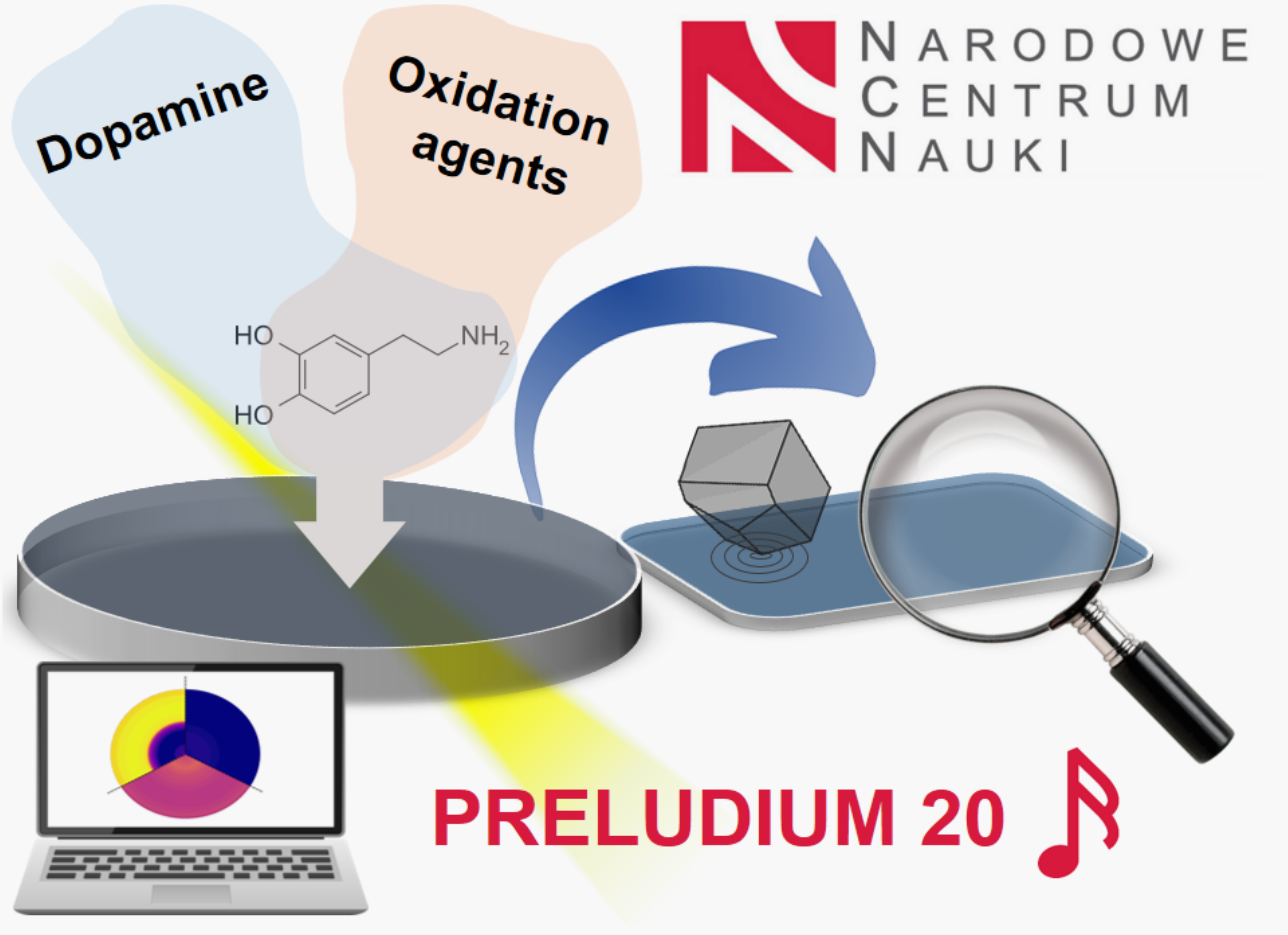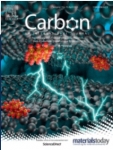
Supervisory institution:
National Science Center of Poland
Project manager:
M.Sc. Eng. Jakub Szewczyk
Budget:
210 000,00 PLN
Start date:
2022-01-11
Duration:
3 years
Contract number:
UMO-2021/41/N/ST5/00211
Since 2007, when the first report of obtaining new synthetic melanin - polydopamine (PDA) appeared in the scientific literature, a period of intensive research about its structure and properties has started. Over the past decade, this biomimetic polymer has attracted great interest, mainly due to its interesting adhesive, optical, electrical, and photocatalytic properties. In the field of Materials Science and Engineering, attempts have been made to use PDA, for example, for antibacterial protection, construction of biosensors, drug carriers, and water remediation. The ability of polydopamine-based heterostructures to efficient photocatalytic water splitting has also been demonstrated recently. The discovery was made by a team of scientists from the NanoBioMedical Center (CNBM) in cooperation with national and foreign partners. In such heterojunction, polydopamine was deposited from the solution directly onto the surface of the semiconductor. During the polymerization in solution, suspended nanoparticles and PDA aggregates (clusters) are also produced. However, a relatively new and unexplored area is the ability of polydopamine to form thin films at the gas/liquid (air/water) interface, while maintaining appropriate synthesis conditions, i.e. slow mixing of the solution, and constant but a slight gas exchange. According to the latest literature reports, such membranes may have a thickness of 50 to 200 nm (5-20 x 10-5 mm) and they show dissimilar properties in comparison to polydopamine formed in bulk solution under influence of oxygen dissolved in water. Importantly, they can find completely different applications than thin coatings of polydopamine deposited directly onto substrates, due to the distinct structure and physicochemical properties of PDA, the type of bonding formed with the substrate, and potentially other, yet undiscovered advantages. An article by scientists from CNBM has been published very recently, in which it was presented for the first time that such membranes can have a 2D or 2D-like structure (as shown in the figure). This is a breakthrough discovery and it opens up completely new and exciting possibilities in the field of nanocomposites. Therefore, the project is addressed to the society of Materials Science and Chemistry, and it is outlined to use international scientific conferences and highly ranked scientific journals for communication. The goal is to optimize the process of obtaining the above-described membranes (to improve their homogeneity and to reduce their thickness), by using very low concentrations of reagents and subsequently, to chemically tune them with the use of appropriate oxidizing mixtures based on transition metal salts and hydrogen peroxide. Then, after each of these steps, a series of detailed structural and nanostructural studies will be carried out. The use of very low concentrations of reagents is aimed at increasing the efficiency of the process and thus meeting the assumptions of the Green Chemistry. In order to optimize the process of obtaining membranes, it is also planned to improve the so-called scooping procedure, i.e. applying them to a previously prepared substrate straight from the solution surface. For this purpose, it is outlined to use a completely new procedure, namely to create an intermediate layer between the solution in which the polymerization takes place and the membrane on its surface. The project involves the use of advanced methods of material examination, such as Grazing incidence X-ray diffraction (GIDXRD), atomic force microscopy (AFM), Raman spectroscopy, visible light spectroscopy reflectance, mid and near-infrared spectroscopy, and X-ray photoelectron spectrometry (XPS). This will help to understand the formation of the membranes at the air/water interface, examine the influence of oxidizing mixtures on the process efficiency, structure, and properties of the obtained membranes, and finally to expand the knowledge about the chemical structure of polydopamine, which is still not fully described.


